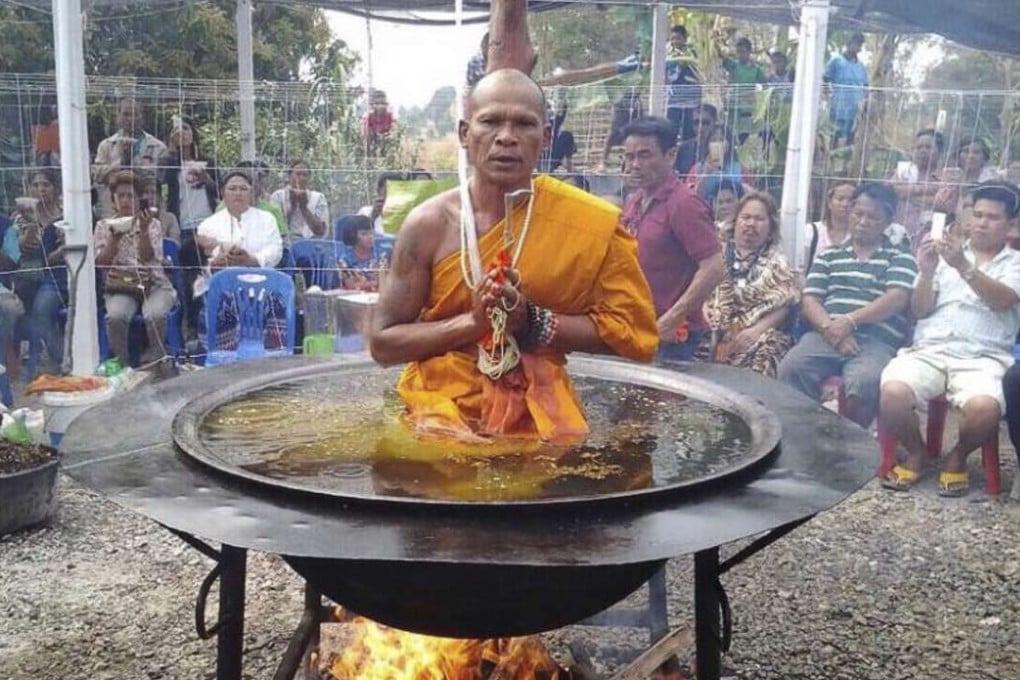Myth busters: Thai scientists debunk sweating crystals, boiling oil and other superstitions
Two scientists are busy debunking myths and claims of miracles performed by monks in a bid to stop gullible Thais getting ripped off by unscrupulous holy men

The saffron-robed monk sits calmly, unharmed in a large vat of boiling oil – or so it seems – over a blazing wood fire.
As Buddhist chants emanate from loudspeakers, an assistant fans the flames while another hands various objects to the monk, who reaches out to tap them with his cane. At the monk’s touch, spectators believe, the objects turn into potent talismans, which would be worth a fortune for those lucky enough to possess them.

To Jessada Denduangboripant, though, this “miracle” is yet another instance of unscrupulous monks preying on gullible Thais, whose capacity for believing in an endless variety of superstitions seems boundless. It wasn’t real magic; it was a trick, Jessada, a biology lecturer at Bangkok’s Chulalongkorn University realised.
So he set out to prove it. The monk’s pot, he noticed from watching a video of the event, was oddly shaped, with a large, flat rim attached to a round bowl, resembling an upturned flying saucer. The vat, Jessada surmised, had been made with an inner layer for insulation against the heat.
In his lab, Jessada half-filled a jar with water, poured palm oil in it, and placed the jar on a hot plate. He waited a while and found he could still dip a finger safely into the oil on top, as the water absorbed the heat. The oil only seemed to be boiling because of air bubbles from the water rising to the top.